Recycling construction materials is of paramount importance in a city like Barcelona due to its numerous environmental, economic, and social benefits. Barcelona, like many urban centers, faces challenges related to rapid urbanization, resource scarcity, and environmental sustainability. By implementing a robust construction material recycling concept, the city can significantly reduce its construction waste, lower its carbon footprint, and conserve valuable resources.
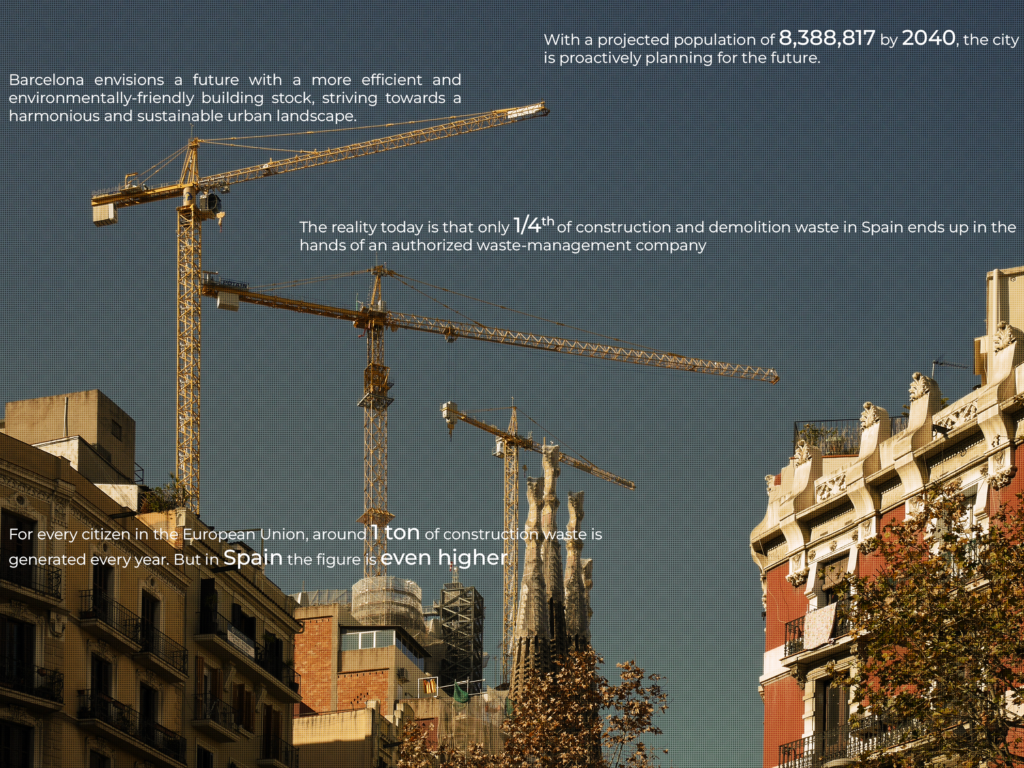
In an attempt to fully utilize the construction and demolition waste in the city, this project ‘Localize the Loop’ aimed to develop a methodology that would enable a selected neighbourhood to implement a densification strategy informed by the materials available in that area.

In order to do so, we started by developing building typologies to understand the material stock available in Barcelona. This was done through historical research and scientific papers to deduce the material composition in percentages and further categorize them into whether they can be downcycled, recycled or upcycled.

The typologies derived narrowed down nine commonly used construction materials, categorized them into their uses, year of construction and took account of their historical prevalence.
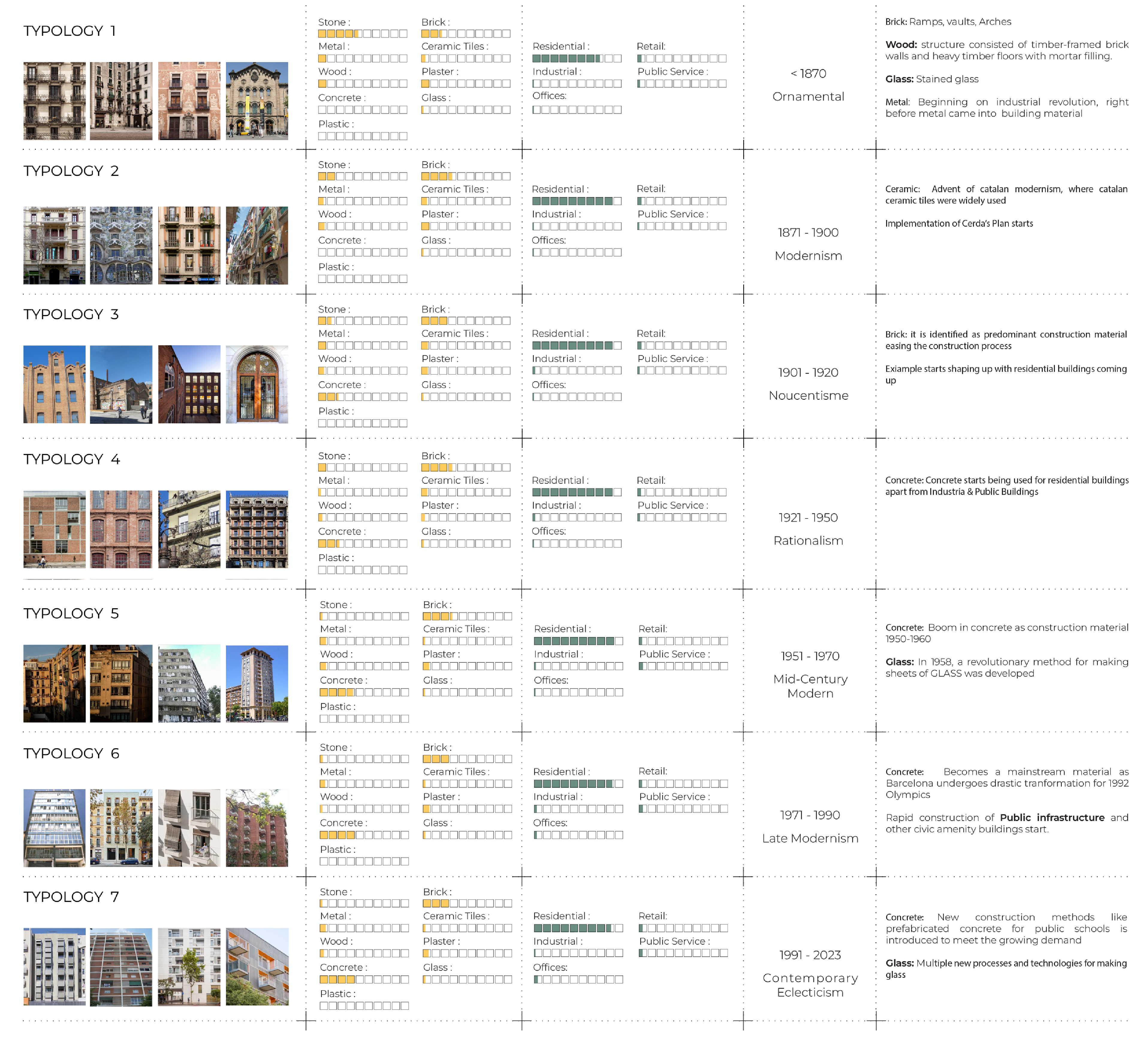
The next step was to separate the buildings that are deemed to be declining based on their EPC rating (G rated) and their status of historical preservation (not protected) as they have more of a chance to be demolished.
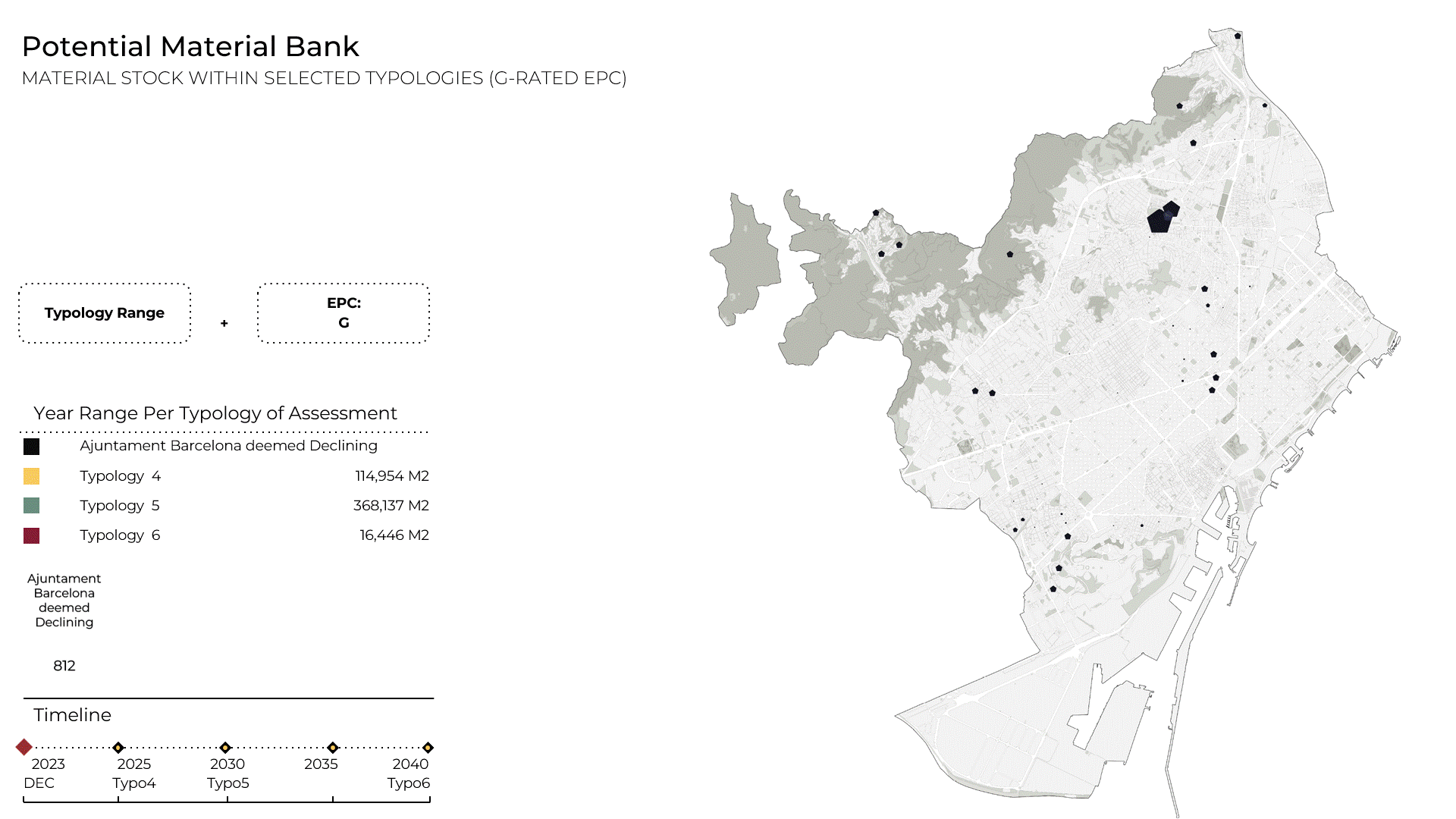
A sankey diagram was developed to categorize the materials into building components so as to deduce their potential to be upcycled, recycled or downcycled.
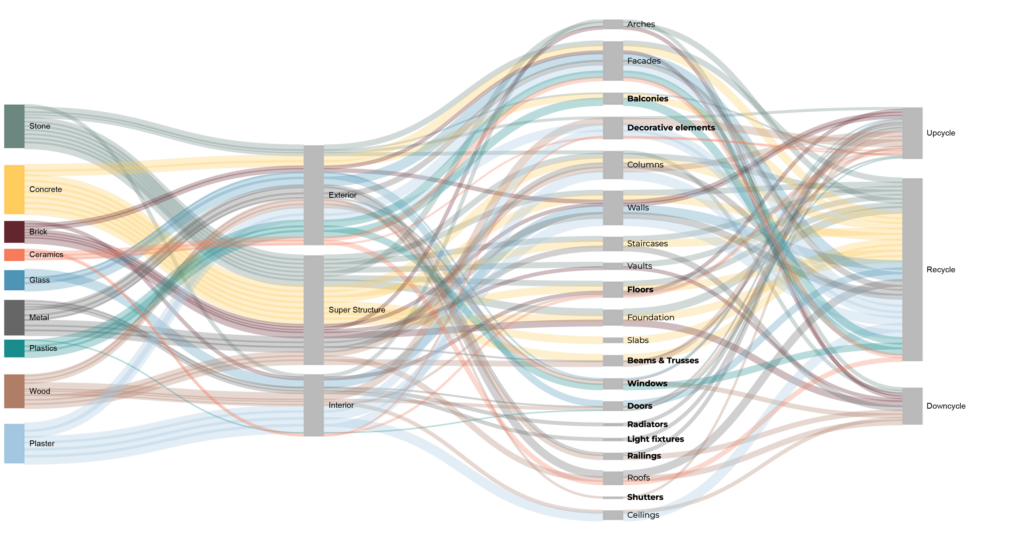
In the existing waste model in the city of Barcelona, there is a lack of sorting materials based on their reusability. By using this model of closing the loop, the project proposes a system of sorting CDW on site for upcycling, downcycling and recycling and introducing a material market that can be replicated in all neighbourhoods, essentially forming a neighbourhood network of material market.
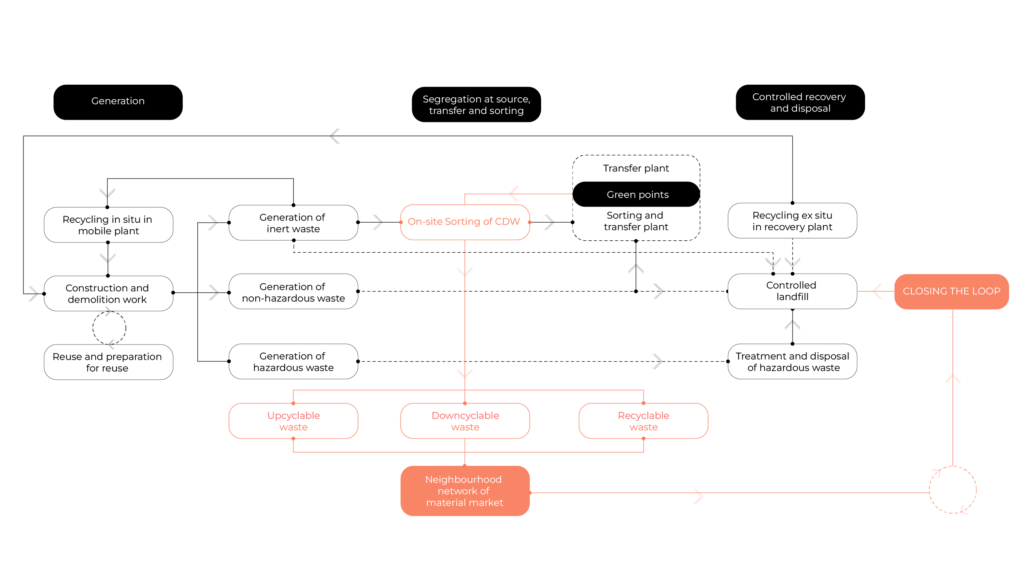
With the objective of selecting a neighbourhood, we looked into the locations of the existing waste management facilities in the city and saw that they are located in the periphery of the city.
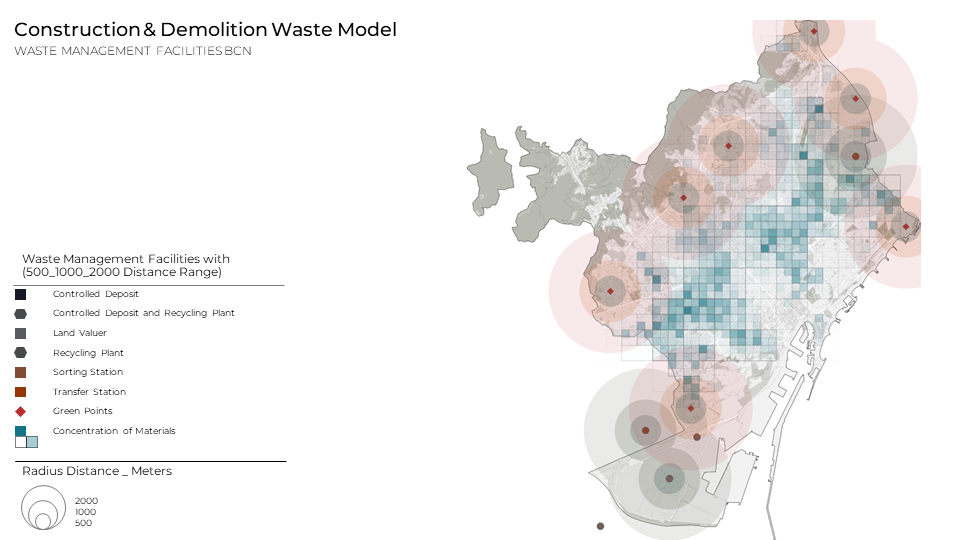
The districts of Ciutat Vella and Sarria-Sant Gervasi were the areas that were deemed with the most potential for densification.
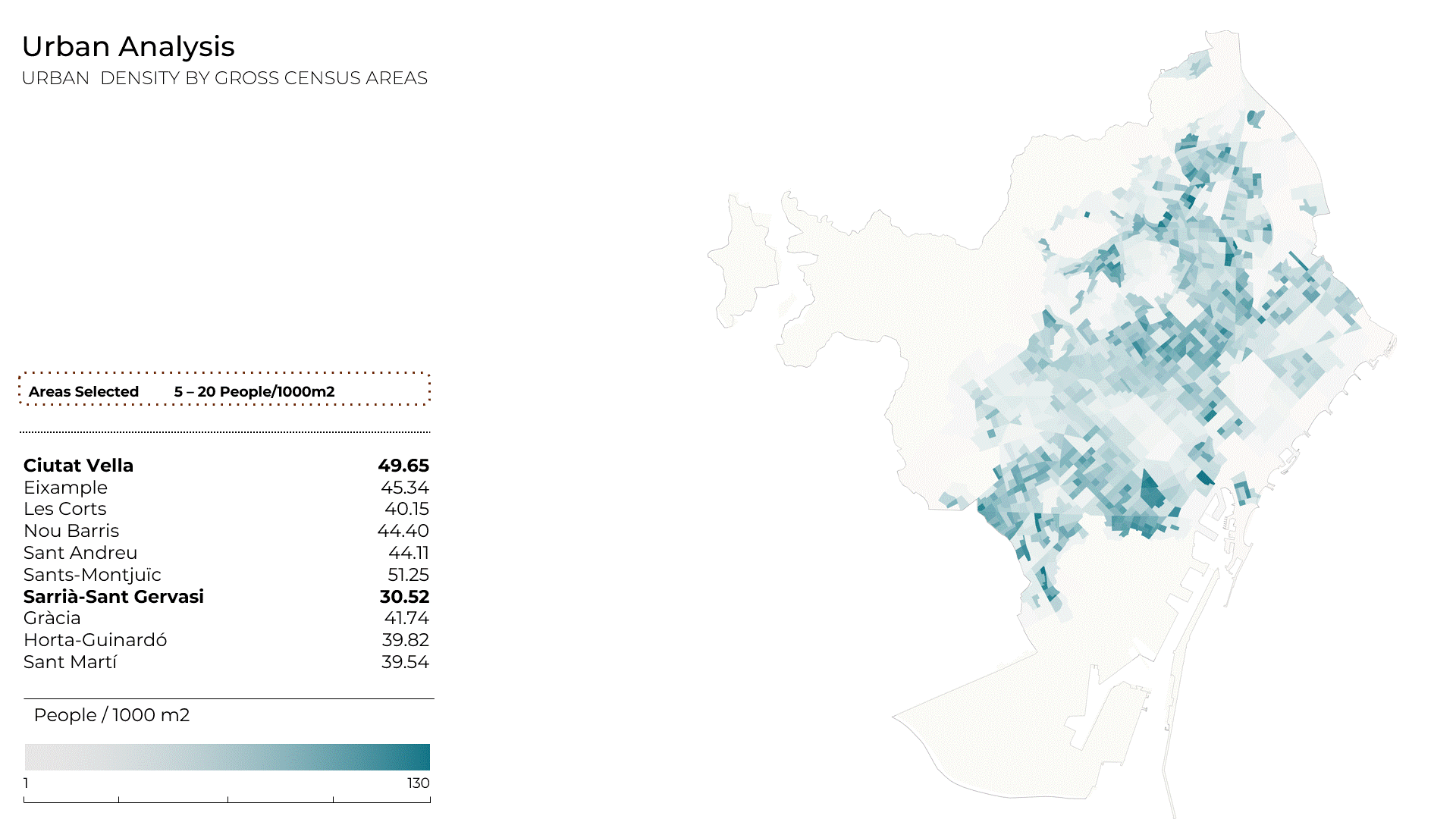
Additionally, the patterns of economic activities were analysed to further narrow down the area of interest.
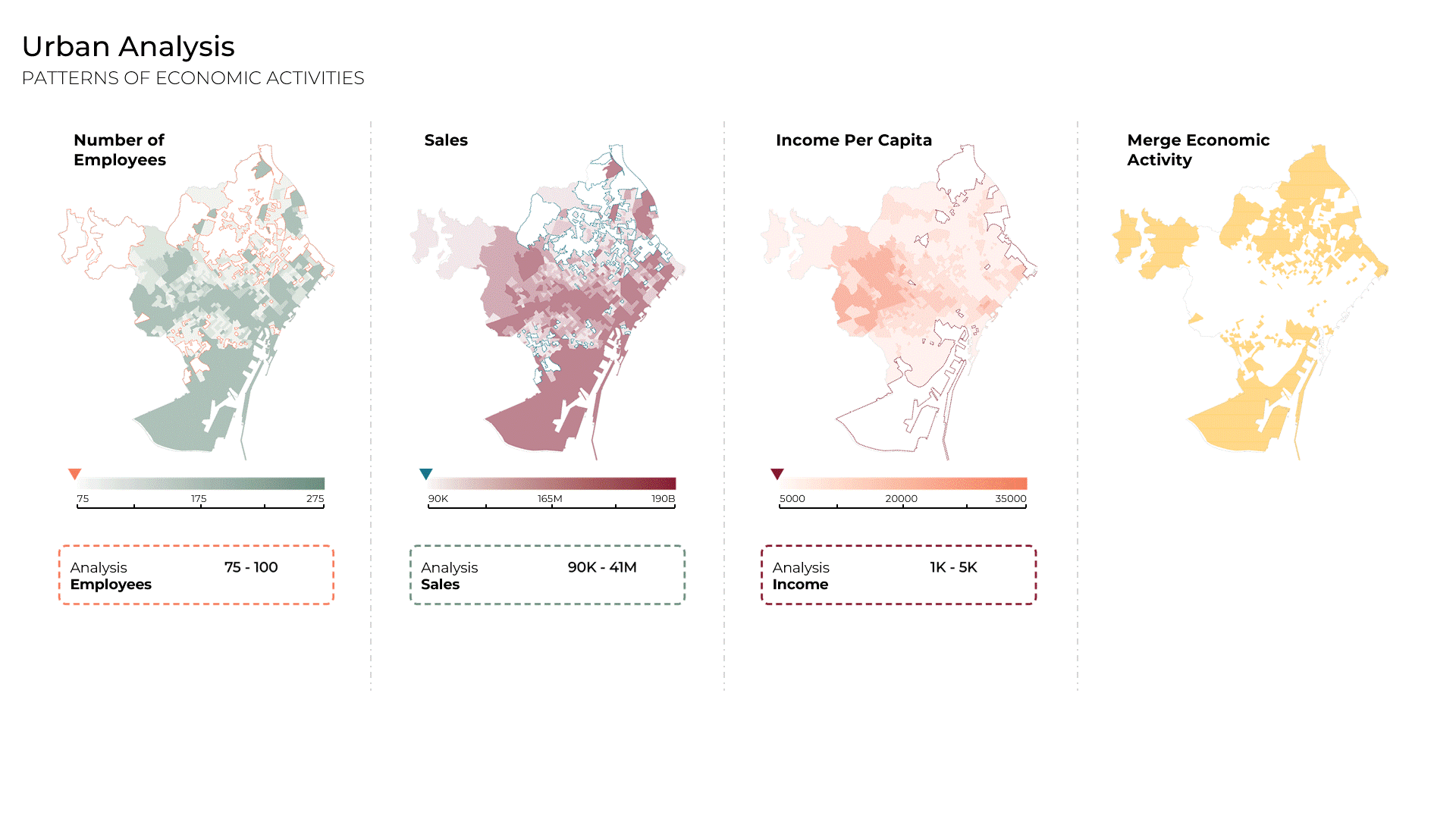
The selected area was then analysed and categorized based on their potential – change of use, expansion and urban enhancement.
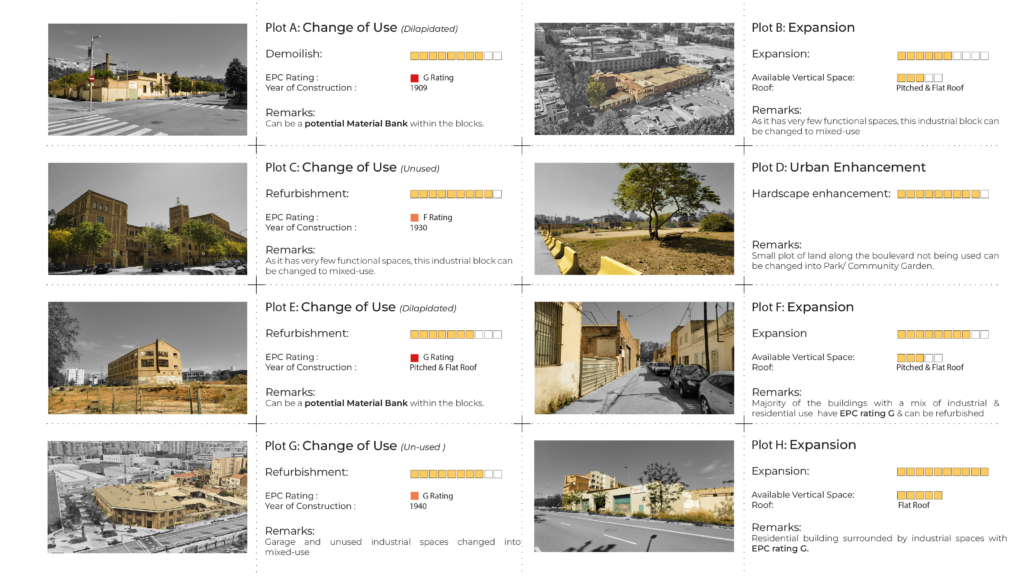
For the densification strategy, a typology catalogue was developed for each plot based on their potential – ground up (new construction), change of use (buildings not properly utilized), rooftop (rooftop expansion) and connectivity (connecting bridges between buildings). Each of these were designed in module of 6×6 so that it can be easily replicated.
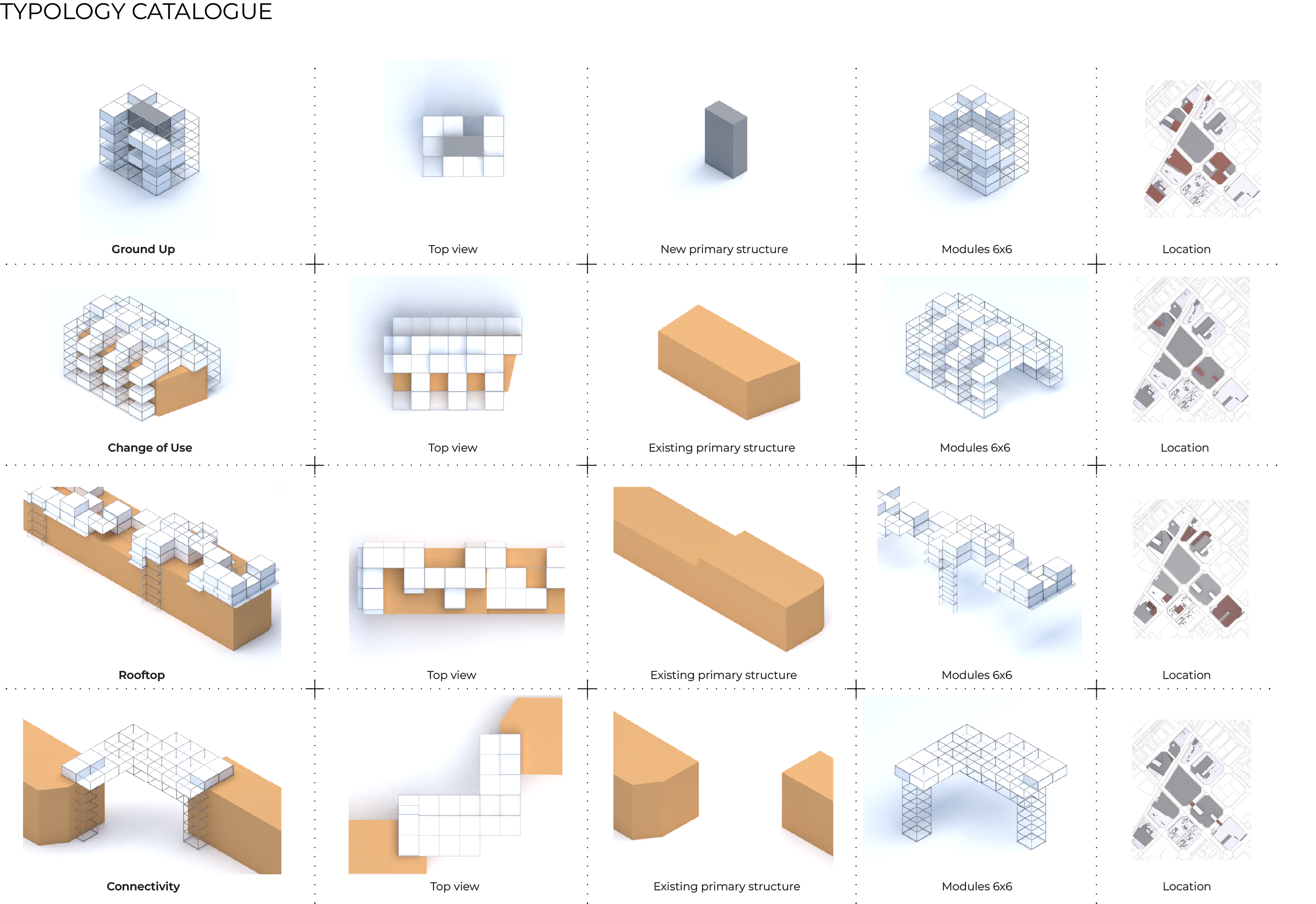
Furthermore, a module catalogue was developed as a design guide to accommodate the materials extracted from the neighbourhood market.
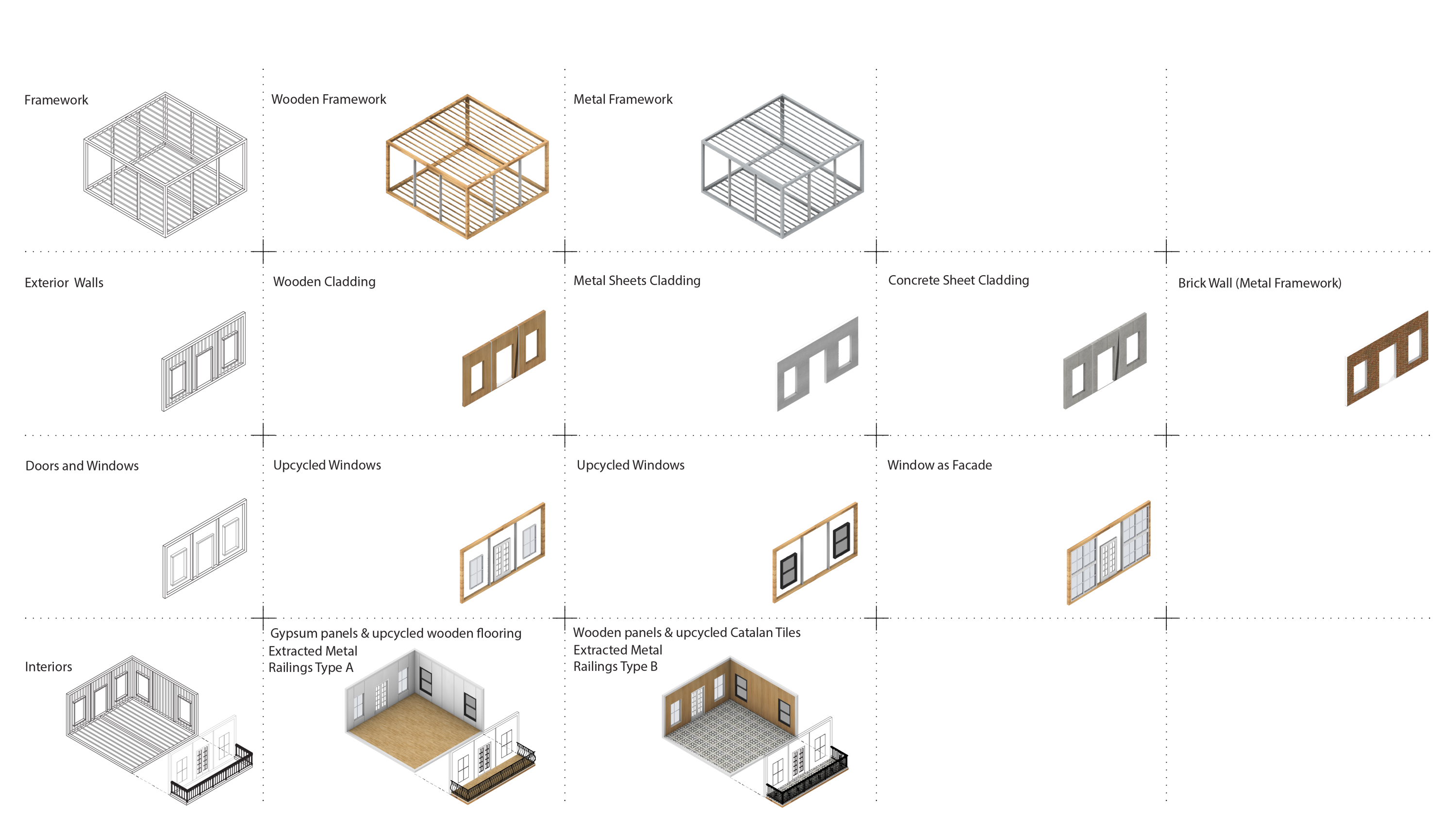
The final catalogue was developed based on functionality such as residential, commercial, offices and community , which were further broken down into different categories.
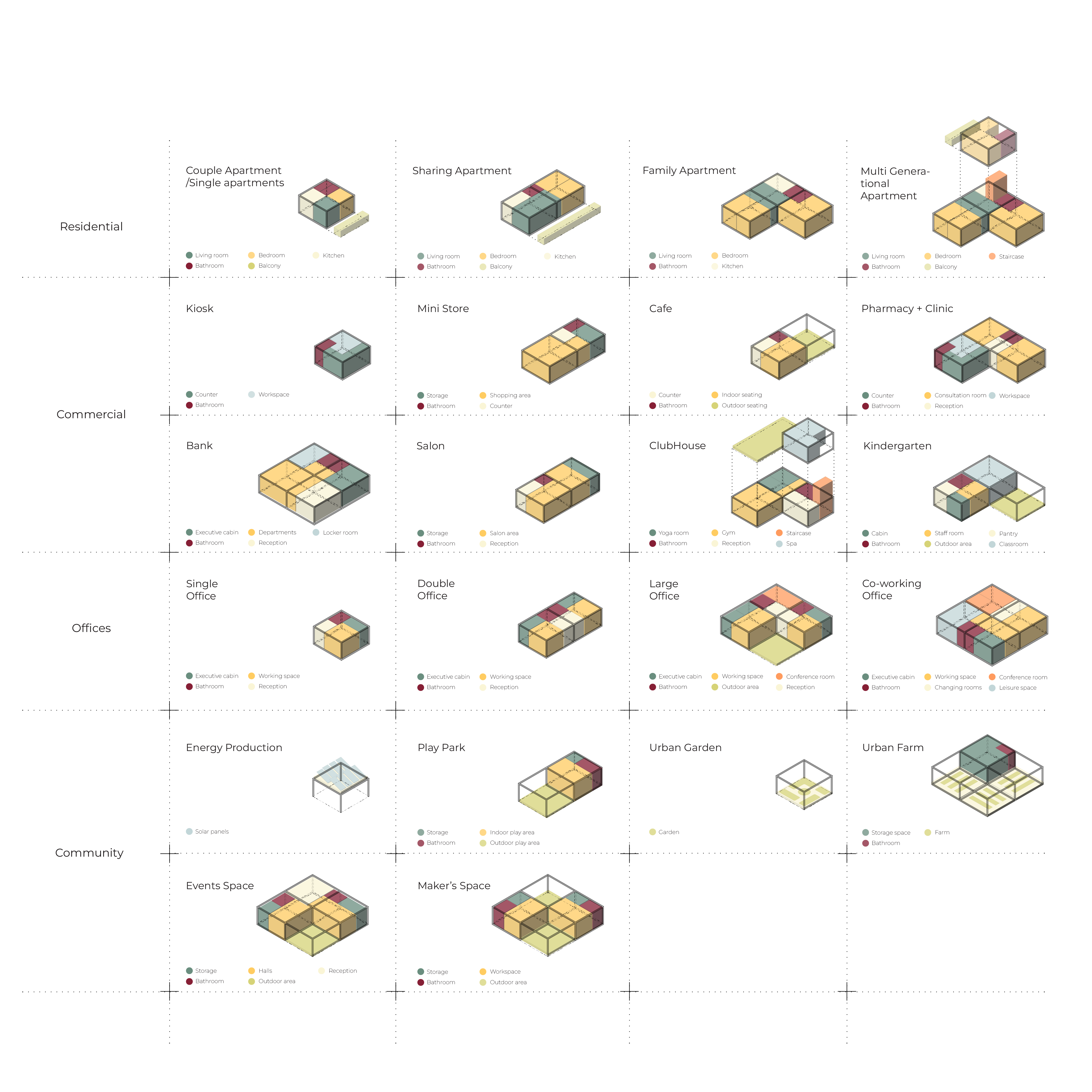
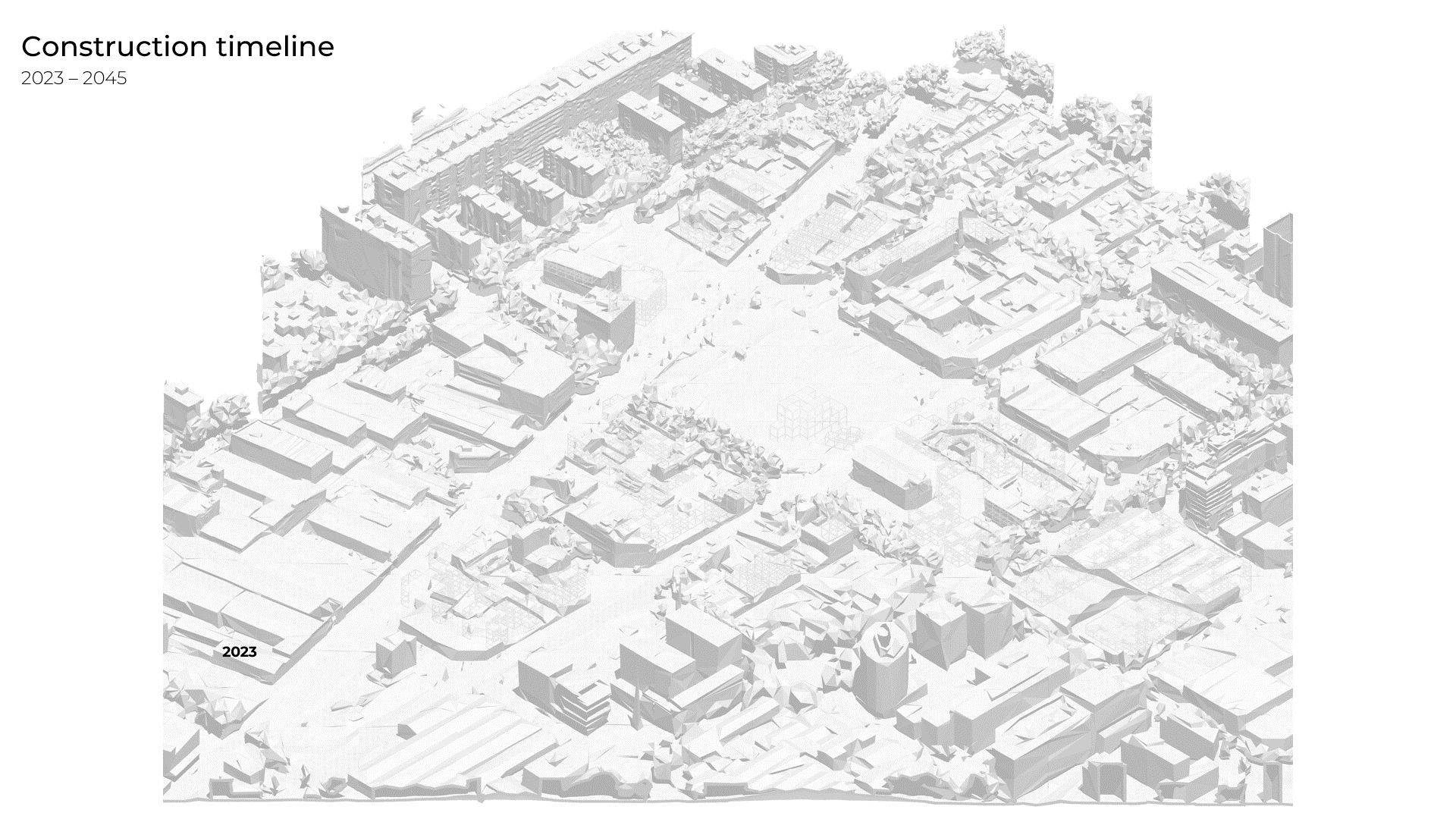
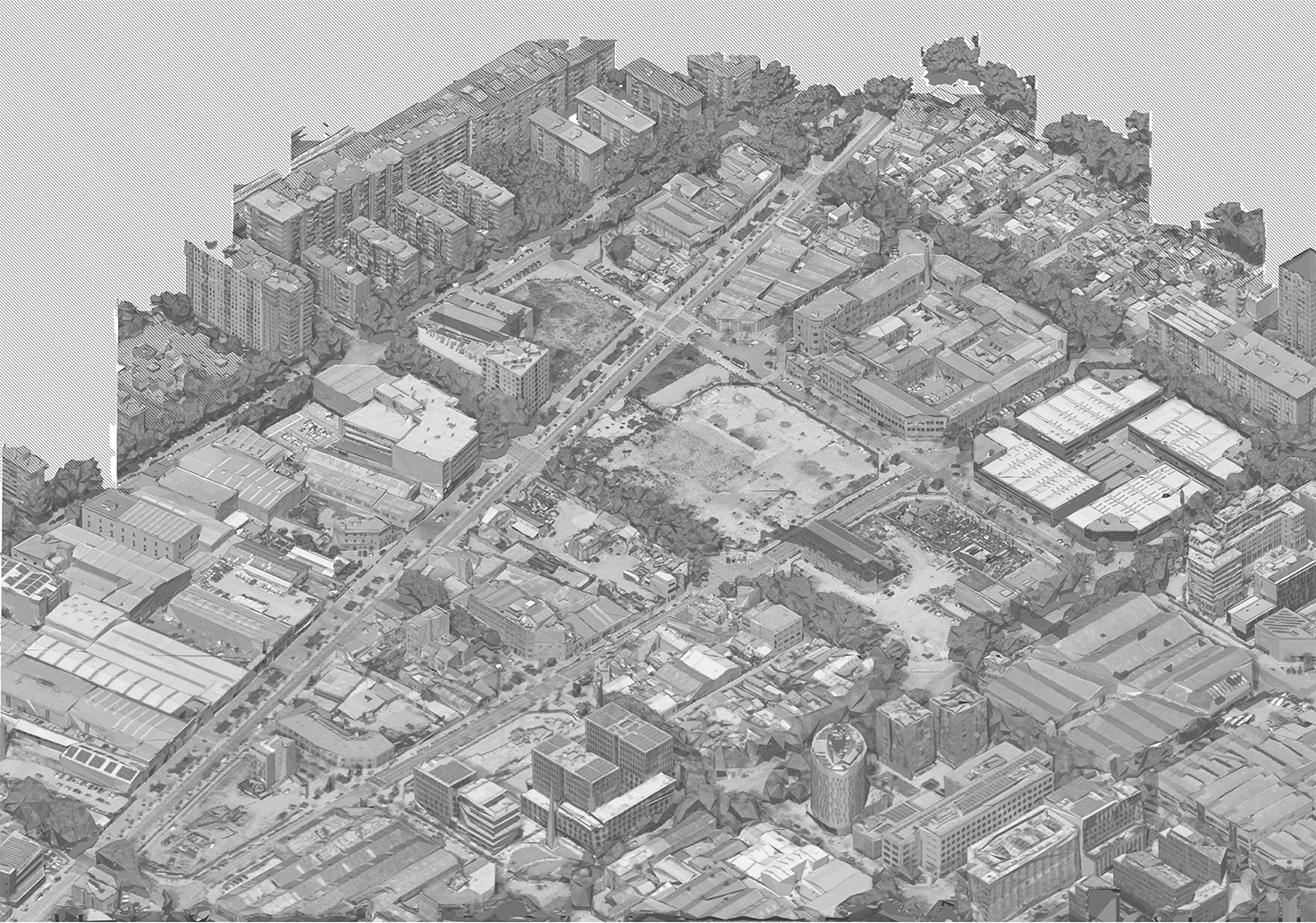
The final design of the selected area is an example of how densification models can be developed based on construction materials that can be extracted out of the neighbourhood itself and the catalogues serve as a guide for mindful, material informed design that can be replicated in all neighbourhoods, thus localizing the loop.

